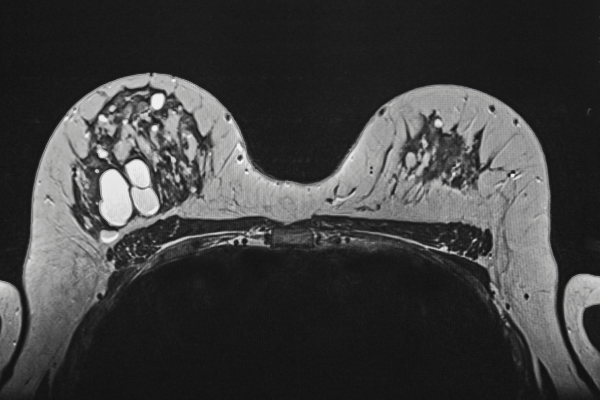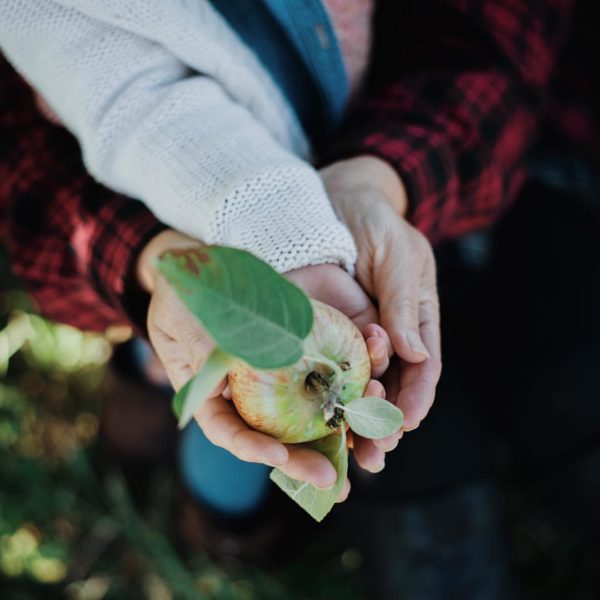Earlier this month I was able to sit down with Dr. Jennifer Witt, a breast surgeon at St. Luke’s Comprehensive Breast Program. She shared with me components of the Comprehensive Breast Program, and how the protocol, treatments, and technology have changed around women’s health and specifically breast health. I am going to pass on the information to you to bring awareness to you about your breasts and your overall health as a busy mom. My conversation with Dr. Witt was easy to follow and she didn’t use complicated medical terms and language; she was relatable and comfortable to learn from.
Become Breast Aware
In the past, it has not been appropriate in our culture to look at breasts, touch your own breasts or talk about your breasts. Health experts strongly advocated for women to perform monthly breast self-exams, and it was a given that an annual breast exam would be done by your physician at your physical each year. We all have heard to do self-exams in the shower or laying down, with one arm above the head, etc. Not only did you need to remember to do the self-exam, but you also needed to remember to do it at the same time each month. Guess what? Dr. Witt says the strong focus on self-exams is a thing of the past, too!
Instead, she wants women to be breast aware. This means paying attention to your breasts to notice if something has changed. Notice if the breast surface has become indented, if there is any nipple discharge (outside of breastfeeding), or if there is something that feels more dense than usual.
You may be rejoicing as you read this – now there is one less thing to feel the pressure to do (breast self-exams)! And you can let go of the stacked guilt of not getting around to it, as well as the fear and worry about how you may have dug yourself into a very dark, deep, hole by not being proactive and examining yourself.

I Found a Lump. Now what?
Call the BOOB hotline at 218-249-2662 (BOOB)! St. Luke’s Comprehensive Breast Program Nurse Navigator Amanda will be on the other end of the phone line. One in three women will feel a lump in their lifetime, so you are not alone. {If you feel something that you think is new or different, Dr. Witt emphasized that you should not be scared – the vast majority of lumps are benign, which means non-cancerous.} Amanda will take the inevitable extreme worry out of the situation. She will be able to get you set up with an initial appointment, sometimes even the same day, for the appropriate breast imaging (either a mammogram or ultrasound). She will then be able to connect you with the appropriate follow-up after you receive your biopsy results, which can be back within one or two days!
The team of professionals at St. Luke’s Comprehensive Breast Program will consider three things when looking at biopsy and image results:
- What does the lump look like in imaging?
- What does it feel like in an exam?
- What does tissue tell us it is?
Depending on the answers to the questions, there will be one of three outcomes:
Outcome 1: You are just fine
Outcome 2: You will need a tissue sample done by needle biopsy to explore further (common with cysts or solid masses)
Outcome 3: You will have the lump fully taken out by a breast surgeon
St. Luke’s Comprehensive Breast Program
The American Society of Breast Surgeons uses an equation to calculate the lifetime risk of a woman having breast cancer by looking at factors such as breast tissue density, health history and lifestyle factors, and imaging. If you are curious and want to know what your risk is, or what to do to decrease your risk of developing breast cancer, you can ask your primary care doctor to refer you to the Comprehensive Breast Program at St. Luke’s or you can refer yourself by calling the BOOB hotline (218-249-2662). A health professional will sit down with you for the assessment and share a list of recommendations to decrease your risk of developing breast cancer.
Not too long ago Dr. Witt shared with us that her sister found a lump in her breast, and the fear and the anxiety they’d felt while waiting for the initial appointment, testing, and follow-up appointment. She is grateful to report that her sister is healthy, but she knew there had to be a better way to help lessen the fear and get women answers faster than the average six-week turnaround time. Breast cancer grows slowly (except for the less common triple-negative breast cancer), doubling about every year when undetected, but knowing that does not change how you feel while you’re waiting for results.
“It’s torture to feel something (a lump) and get freaked out, and still put on your mom-face and ‘do all the things.’ “
Dr. Witt wanted the process to be Quick. Easy. Not overkill. She wanted to get women answers right away. So, the team that diagnoses breast issues at St. Luke’s met to figure out how the wait for answers could be shortened, and the St. Luke’s Comprehensive Breast Program was created!
When do Chemo and Radiation Come into the Picture?
When biopsy results come back showing you have breast cancer, Dr. Witt or another St. Luke’s general surgeon will sit down with you and discuss a plan. If the cancer is caught while it’s still within the breast, they will just treat the breast by mastectomy (removing the entire breast) or lumpectomy (removing just the lump) and radiation. If there is reason to believe the cancer has spread outside of the breast, such as in the lymph nodes or as a large tumor, they will work with St. Luke’s Regional Cancer Center to treat it with chemotherapy.
Where Can I Find Support?
If you have a history of breast cancer, the Comprehensive Breast Program at St. Luke’s offers many avenues of support. The number one resource is the nurse advocate, who is with you from your first call. There are also activities such as cancer center yoga, a survivors group, survivorship groups with lectures, and a Young Women’s support group.
Dr. Witt sees an unfortunate number of young women with breast cancer and she feels these women need different support resources than older women do. They need tips on how to talk to their young children about cancer, maintaining sexual health with their partners, learning how to stay active with adaptive movements, managing unexpected hot flashes at their age, etc.
As women, we know deep down when something isn’t right and when we should get it checked out. Fear often keeps us from doing so. The goal of the Comprehensive Breast Program at St. Luke’s is to make getting a breast concern evaluated as easy and non-anxiety invoking as possible. Dr. Witt wants to reassure you that there is a whole breast team who come together and work as a team to support you.











